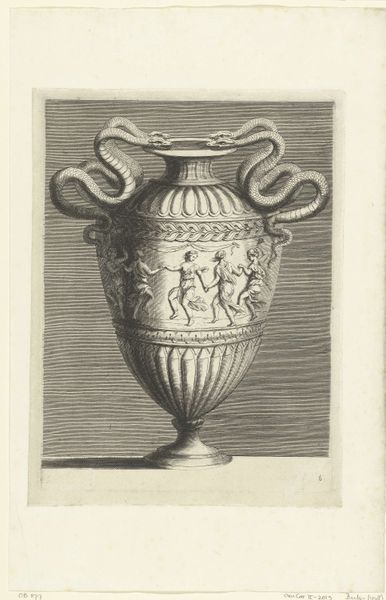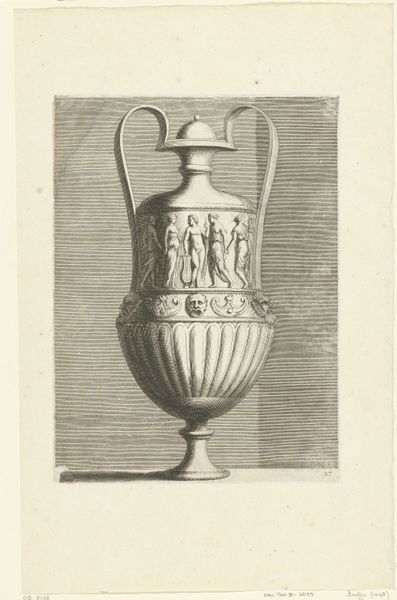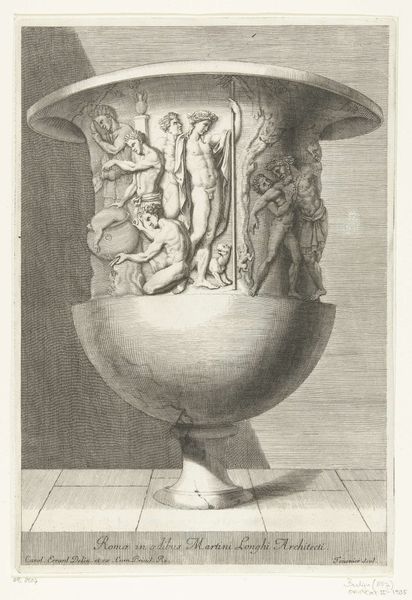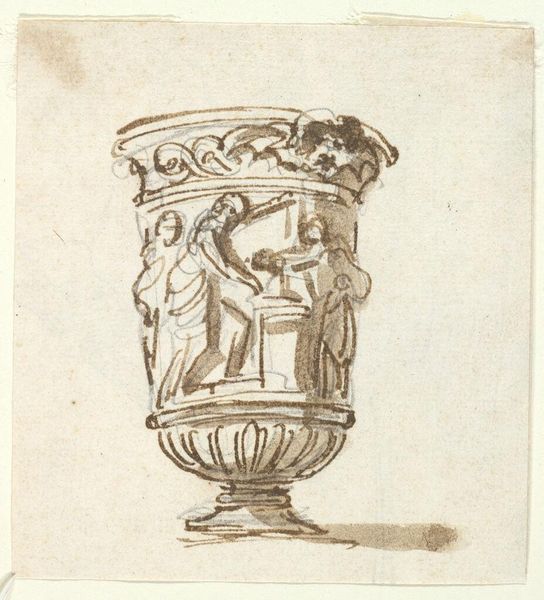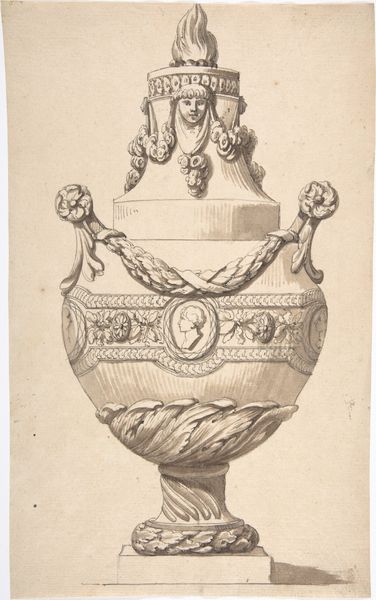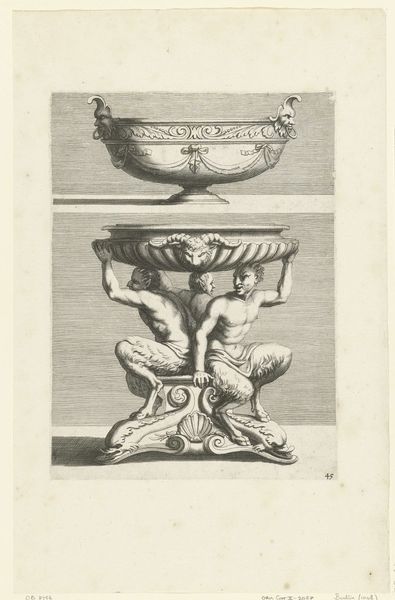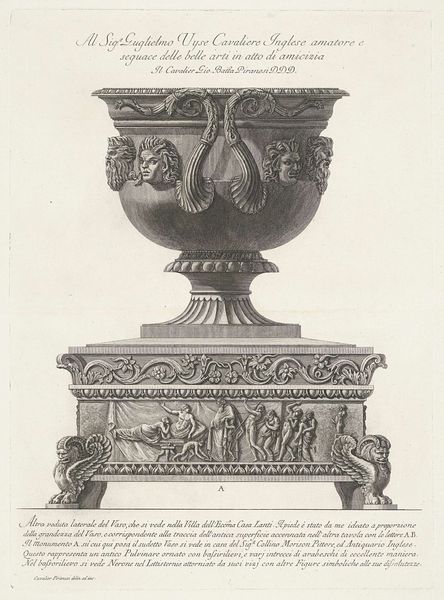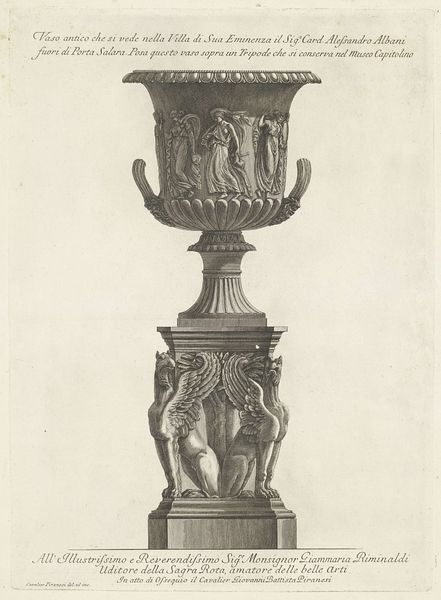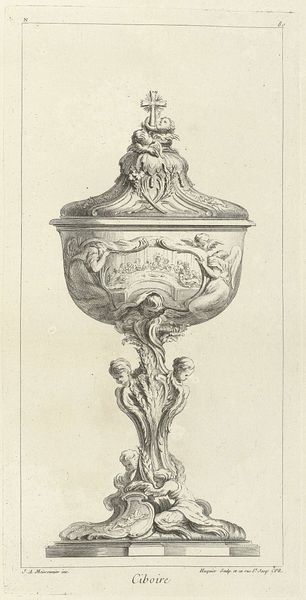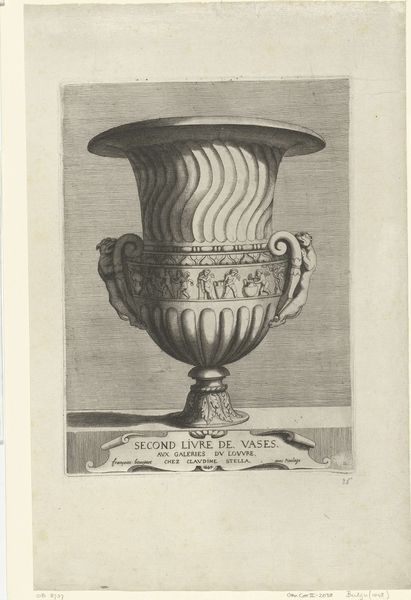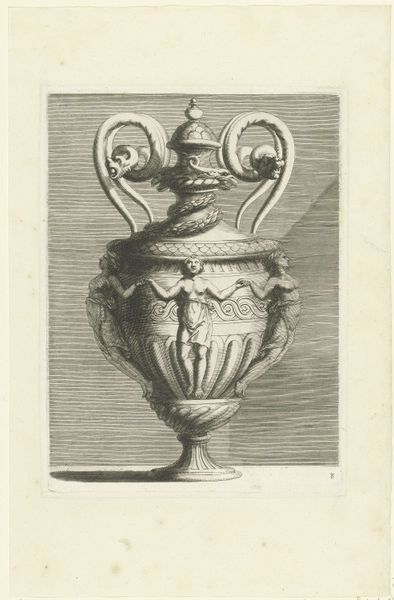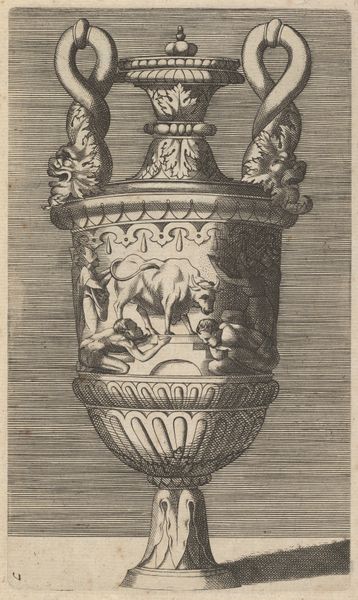
drawing, print, etching, engraving
#
drawing
# print
#
etching
#
figuration
#
ancient-mediterranean
#
history-painting
#
engraving
Dimensions: height 278 mm, width 202 mm
Copyright: Rijks Museum: Open Domain
Curator: This etching by Françoise Bouzonnet, dated 1667, is titled "Vaas met drie staande figuren in reliëf"—Vase with Three Standing Figures in Relief. Its stark linearity immediately calls to mind neoclassical forms and sensibilities. Editor: It does have a severity to it, doesn't it? But also, an elegant stillness. The light catches the vase just so, highlighting its form. The hatching gives a wonderful sense of volume to both the vase and figures depicted upon it. Curator: Precisely. And those figures – frozen in classical poses, adorned in what appear to be Greco-Roman robes. The semiotic density here is noteworthy: observe their postures, their interactions; how these design elements affect our perception of the artifact's historicity. Editor: Absolutely, and beyond that the positioning of this etching, even within the grander scale of 17th century France—a time of aristocratic opulence—presents something that almost echoes republican values through the chosen figures. Curator: A valid interpretation, yes, but allow me to interject that such an evaluation is perhaps too forward, ignoring the deliberate formal restraint. The balance—achieved through a limited palette of grays and whites—points to a focused, self-contained, structural whole. Editor: But the social context is undeniable! France at this time was heavily invested in reviving Classicism, architecture, and design to bolster a sense of legitimacy. Wouldn't this influence inform our reading of the image as potentially having sociopolitical dimensions? Curator: No doubt cultural undercurrents ripple within the piece, but let us appreciate first the artistry. The line weights, their varying intensities which conjure light and shadow – elements crucial to the work's innate visual success. One need not ignore social histories—indeed these considerations amplify the reading. Editor: Well put. It gives a certain feeling, doesn’t it? Not only of the classic style itself but that this rendering on paper helps the memory of these styles carry forward to viewers in Françoise's lifetime, allowing them to reflect, imitate, and revive these styles for new audiences. Curator: The structural precision—its very own inherent architecture—reflects artistic intentions above anything. Editor: Still, its ability to engage the social sphere remains palpable—perhaps because the forms that define it were themselves produced within certain cultural environments. Thank you for enlightening me regarding this artwork.
Comments
No comments
Be the first to comment and join the conversation on the ultimate creative platform.
